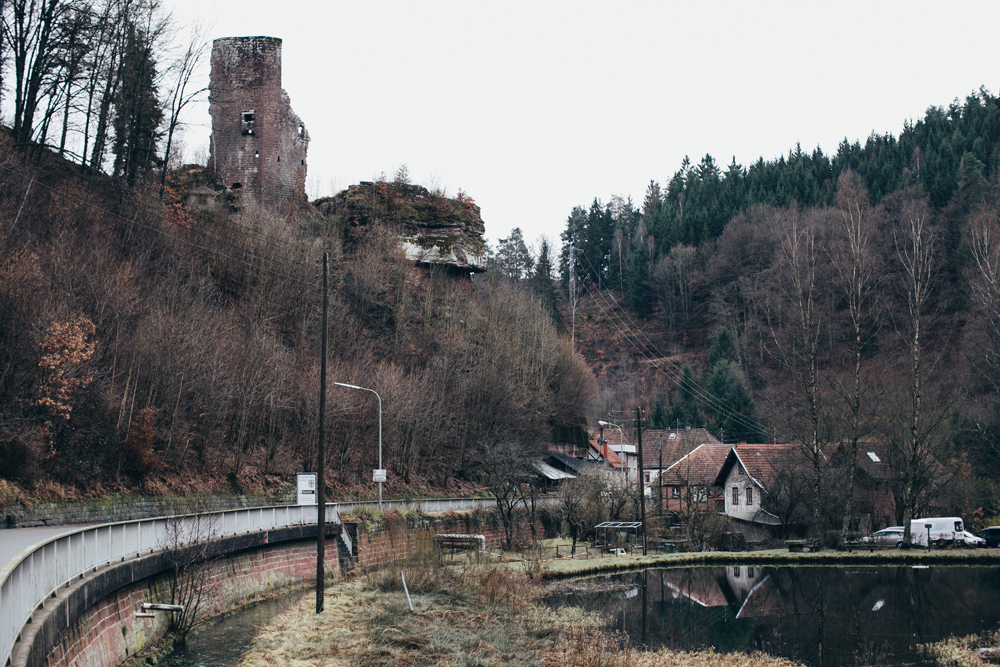Acrid smoke rising up from the embers greedily devours the oxygen. Hard rhythmic hammer blows crash down on glowing hot metal. Ice-cold water rushes past the window turning the mill wheels. It’s a scene just like 200 years ago – to be taken in at the “Wappenschmiede” (blacksmith’s workshop) in the valley of Elmstein where Benno Münch has made the age-old handcraft of the blacksmith come alive again in a “working museum.”
“To toil here almost each night was incredible physical labour. As a blacksmith, you would not have grown old – but become deaf, that’s for sure.” His thick woollen cap pulled down over his ears and wrapped up warm and tight in his anorak, Benno Münch is standing at the bank of the Speyerbach stream. The many cold winter days with clammy weather down here in the shady valley take a toll on his health, too. But no matter if he has a cold or not – you can meet him here almost every weekend at the Wappenschmiede in the Elmstein valley where he spends all of his freetime. At the same time, he remains modest and realistic: “It takes an initiator to get things on track and keep them flowing, but many craftsmen with technical expertise, helpers and donors are even more demanding than I am.”
Here, in the middle of the Palatinate Forest, between the villages Frankeneck and Johanniskreuz, ruins and historical monuments from the past 800 years are squeezed into an area measuring 24 kilometres in length. Castles from the Staufer era and church steeples, mills and sawmills, old pubs and paper factories are strewn about. With the decline of forestry, many valley inhabitants moved to the cities along the Rhine. And today it seems as if the forest was fiercely determined to reclaim the land stolen by Man, centimetre by centimetre. The dense greenery created by birches, oaks, pines and spruce expands all the way down to the Speyerbach and the railroad tracks of the steam-driven “Kuckucksbähnel.”
Everyone in Elmstein knows that the old Wappenschmiede is located on the “Teufelsinsel”, the devil’s island – in the middle of the Speyerbach. This name bespeaks embittered struggles of the mill habitants for existence over an area just a few square metres large, a broken family and hostile neighbours. It probably was Johann Adam Lanz who put the hammer mill and the saw mill into operation in 1792. When he died in 1822, his son Andreas inherited the mill; he had already given the smithy to his daughter and her husband Georg Römer ten years earlier. “The smith back then always had the upper hand. He could cut off the water supply for the sawmill.” Benno Münch tells the story about the battles over the water distribution in the valley grippingly and down to the last detail. The conflict did not end until 1899, when Theobald Haag, the grandfather of the last blacksmith of Elmstein succeeded in settling the quarrels which ruined both smith and miller.


















